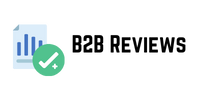A lead is information that makes it possible to contact a specific person or company. Name, email, phone number, address, etc. Any information or group of information that allows contact with a person or company.
In this article we will go through the following topics:
- What are Leads?
- What are the Types of Leads?
- How to get Leads Automatically?
- How to Use Leads to Sell More?
1 – What are Leads?
With the popularization of digital marketing in Brazil, the increase in the number of online sales and the digitalization of companies, the term futhouse, which also offers unique has gained more and more space and notoriety in the corporate environment.
Suddenly we start hearing salespeople say: “I need leads”, “The more leads I have, the more sales I will make” or even, “Without leads, I don’t sell”.
But after all, what are leads and how can you use leads to increase your sales?
What is a lead?
Simply put, a lead is data how does instagram search work? to a person or company.
A lead is literally a “clue” about a specific person.
Think of this track as an individual’s contact information . In other words, it’s a way to get in touch with this person and offer a product or service.
Some examples of leads are: email, corporate email, phone number, WhatsApp or Telegram number, etc.
2 – What are the Types of Lead?
Within this specification there are several types of leads, including:
- Assets
- Liabilities
- Outbound
- Inbound
- Qualified
- Segmented
- etc
There are dozens of different ways to classify a lead. Ideally, you should use the type that best fits your type of activity.
A brief comparison between active leads and passive leads (the most popular in Brazil).
Active Leads
This is when the acquisition is bgb directory actively, that is, it is not the customer who takes the initiative, but rather the seller or the company.
One of the biggest advantages of this type of lead is that you are the one who defines the customer profile. You choose who you want to approach or not, which allows you autonomy and greater decision-making power when approaching a new customer.
The volume of contacts is another point that deserves to be highlighted. Since it does not depend on your future client to register or fill out a form requesting contact, the number of companies actively prospected is much higher. In addition, the cost per acquisition is much cheaper when compared to passive leads.
The downside of this type of lead is that the customer doesn’t know that you’re going to get in touch. This makes the buying journey a little longer because you first need to get the customer’s attention and then spark their interest to move forward with the negotiation.
Passive Leads
This is when the customer performs an action requesting contact. The salesperson receives this lead passively. In this modality, the future customer is waiting for someone to contact them so that they can clarify their doubts.
Passive leads are often closer to making a purchase. However, they tend to have a slightly higher cost compared to active leads.
Another negative point of this type of lead is that no matter how much segmentation is done through campaigns and ads, it is not possible to guarantee that only people with a real purchasing profile fill out the contact form or request more information.
It is common for people to register even though they do not have the correct specifications to purchase a certain product or service.
3 – How to Get Leads Automatically?
Pcontrol’s Lead Generator is an example of how active lead capture works. In one month, you can receive up to 5,000 contacts from companies in an automated way.
